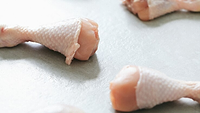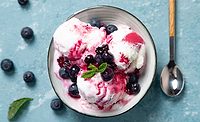Consumer Reports: Top 10 Riskiest Foods Based on Recalls, Foodborne Illness Outbreaks

Credit: Vlad Deep via Unsplash
Advocacy group Consumer Reports (CR) has compiled a list of the ten most high-risk foods, based on recall and foodborne illness outbreak data collected from federal food regulatory agencies.
For its analysis, CR used an in-house data extraction software to pull data from the U.S. Centers for Disease Control and Prevention (CDC), the U.S. Food and Drug Administration (FDA), and the U.S. Department of Agriculture (USDA). CR included data on food recalls and foodborne illness outbreaks occurring from January 2017–December 2022, focusing on incidents linked to a microbiological origin. To rank the risk posed by the foods identified in its analysis, CR considered 1) the number of recalls and/or outbreaks caused by a certain food items, 2) the number of illnesses and deaths associated with specific foodborne disease outbreaks, as well as the number of states in which such outbreaks occurred, and 3) the amount of a certain food item affected by relevant recalls and outbreaks.
Listed in descending order, the top 10 foods linked to serious recalls and outbreaks in the U.S. during 2017–2022 as identified by CR, are:
1. Leafy Greens
- Most often contaminated with Escherichia coli or Listeria monocytogenes
- Caused 11 deaths and 614 illnesses
- Implicated in 50 recalls/outbreaks
- A total of 4,390,638 cases of product were recalled.
Read about FDA’s 2020 Leafy Greens Shiga Toxin-Producing E. Coli (STEC) Action Plan.
2. Deli Cheeses and Meats
- Most often contaminated with Salmonella or L. monocytogenes
- Caused seven deaths and 409 illnesses
- Implicated in 122 recalls/outbreaks
- A total of 16,925,594 pounds (lbs.) of product was recalled
3. Ground Beef
- Most often contaminated with E. coli or Salmonella
- Caused two deaths and 643 illnesses
- Implicated in 22 recalls/outbreaks
- A total of 13,744,438 pounds (lbs.) of product was recalled.
Read a recent CDC analysis identifying ground beef contaminated with Salmonella to be a significant cause of foodborne illnesses in the U.S.
4. Onions
- Most often contaminated with Salmonella
- Caused no deaths and 2,167 illnesses
- Implicated in 13 recalls/outbreaks
- A total of 78,015,814 lbs. of product was recalled.
Read about FDA’s commodity-specific prevention strategy for salmonellosis associated with bulb onions.
5. Turkey
- Most often contaminated with Salmonella
- Caused one death and 398 illnesses
- Implicated in four recalls/outbreaks
- A total of 389,650 lbs. of product was recalled.
6. Chicken
- Most often contaminated with Salmonella
- Caused two deaths and 190 illnesses
- Implicated in four recalls/outbreaks
- A total of 195,061 lbs. of product was recalled.
Read about USDA’s Food Safety and Inspection Services’ (FSIS’) Proposed Regulatory Framework to Reduce Salmonella Illnesses Attributable to Poultry.
7. Papayas
- Most often contaminated with Salmonella
- Caused two deaths and 332 illnesses
- Implicated in 12 recalls/outbreaks
- A total of 600,974 lbs. of product was recalled.
8. Peaches
- Most often contaminated with Salmonella
- Caused no deaths and 101 illnesses
- Implicated in six recalls/outbreaks
- A total of 113,062,324 lbs. of product was recalled.
9. Cantaloupe
- Most often contaminated with Salmonella
- Caused no deaths and 302 illnesses
- Implicated in four recalls/outbreaks
- A total of 279,205 “retail units” and 946 gallon tubs of cut product were recalled.
10. Flour
- Most often contaminated with E. coli or Salmonella
- Caused 0 deaths and 44 illnesses
- Implicated in 22 recalls/outbreaks
- Amount recalled was unavailable.
CR excluded specific high-risk commodities from its analysis and report for various reasons. For example, raw milk products were omitted because, while raw milk is known to often be contaminated with bacteria, relatively few people drink it. And sprouts, which were linked to 50 outbreaks between 1996 and 2018, were not included because many large food retailers, have stopped carrying sprouts, and because an FDA draft guidance for reducing food safety hazards in sprouts may have also reduced the number of recalls and outbreaks associated with the products.
Looking for a reprint of this article?
From high-res PDFs to custom plaques, order your copy today!







